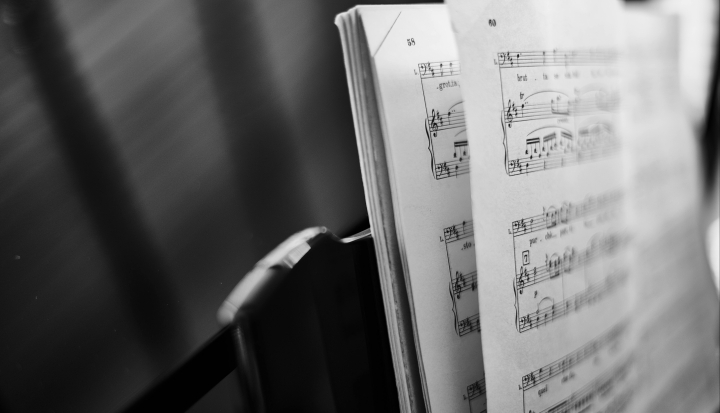The day after my grandmother Helen died, I needed my GPS to drive routes that I should have known easily. I struggled to find items on my list at the grocery store and wandered helplessly down the aisles with my cart. Aware that my cognitive abilities were compromised, at one point I told the hospice nurse, “I really am an intelligent, articulate human being, though I know I’m not coming across that way.” With grudging humility I accepted that I would have to submit to this grieving process like everyone else. Loss has its way. Even Jesus wept for Lazarus, whom he loved.
I naively hoped that as a minister with training and experience in church work, end-of-life caregiving, pastoral counseling, and theology I would move through the vigil at her deathbed and then her death with elegance and professional aplomb. Yet I found myself strangely disoriented and unmoored as I moved through the practical work of talking to the funeral home staff, cleaning out her room at the nursing home, writing her obituary, and contacting family to advise them of the visitation and funeral dates. Joan Didion’s line from A Year of Magical Thinking (Vintage), that “grief turns out to be a place none of us know until we reach it,” came to mind as I made my way through this curious fog.
“Life is changed, not ended,” state the words of the Eucharistic preface during the Catholic funeral Mass. After a death we often struggle to integrate the reality that our loved one is gone and yet somehow mysteriously not totally gone. I had been with my grandmother when the veil was thin, during her final hours when it felt as though my role was to be a midwife for her departure from this world. After being at that precipice, in that intensely powerful space between life and death, being back in the world of making hotel reservations for the funeral, organizing photographs for the wake, and tracking down the email addresses of second cousins was disorienting.
In the days and weeks following that middle-of-the-night phone call from the hospice nurse with the news of Grandma’s death, I craved a lodestar to orient myself amid the waves of grief, a channel for my prayers I couldn’t begin to put into words. I wondered how to do this—for my grandmother, for my family, for God, for myself. Beyond the many practical logistics that come with a death in the family, how was I to chart the way? What could serve as a guide?
I found an answer to my questions and to my wordless prayers in 19th-century composer Johannes Brahms’ Ein deutsches Requiem (A German Requiem)—a great work of art that became a trusted roadmap as I traversed the grief at the passing of our family matriarch.
At age 21, I learned and performed Brahms’ Ein deutsches Requiem shortly after the September 11 attacks. The hours I spent pounding out challenging alto lines on the piano to get them in my ear, reviewing my score as I listened to recordings, and practicing the strange German vowel sounds became a spiritual practice as I moved through that enormous grief that was both national and personal. I had been living in midtown Manhattan the summer before, so the attack on the twin towers felt sickeningly close to home. Our college choir’s dedication to collectively create something beautiful felt like joyful resistance in the face of that terror. I channeled my grief into that choral masterwork, and it became a vehicle for prayer, a way to claim the promise of the resurrection in the face of loss.
Shortly after my grandmother’s funeral, a friend invited me to a performance of Brahms’ Requiem. On a cold early spring night, I attended the performance with the rosewood beads of the rosary Grandma had held as she died entwined in my fingers. I wore her pink scarf that I had worn when I eulogized her. Fourteen years after having sung the Requiem, I witnessed it and received it as a gift. A dear friend singing soprano had told me her performance would be dedicated to those who grieve, including my family. Sitting in a box seat and listening to the choir and orchestra, I sensed my prayers for a lodestar had been answered through this piece of music.
Brahms wrote the piece as he grieved two significant losses: his mother Christiane and his musical mentor Robert Schumann. Brahms chose not to follow the traditional text of the Catholic funeral Mass and instead hand-picked pieces of scripture, not to pray for the dead but rather to console the living.
Selig sind die da Leid tragen—blessed are those who mourn—are Jesus’ words that Brahms chose for the opening words of the first chorus. Brahms is one of many to convert wrestling with loss into generating art that nourishes the spirit bruised by the passing of a beloved. Musicians, poets, painters, sculptors, and artists of all kinds since the dawn of history have grappled with the question of human mortality. Poet Jane Kenyon states that one of the poet’s jobs is “to console in the face of inevitable disintegration, of loss and death, all of the tough things we have to face as humans. We have the consolation of beauty, of one soul extending to another soul and saying, ‘I’ve been there too.’ ” I found “the consolation of beauty” and solidarity in grief through this choral masterwork.
The Requiem is constructed like a huge arch with the first and seventh, second and sixth, and third and fifth movements (which feature soloists) mirroring each other. The well-known fourth movement, Wie lieblich sind deine Wohnungen (How lovely is thy dwelling place), stands alone in a gentle 3/4 meter in a major key, as if outside of time, peaceful and untroubled. Selig sind, die da Leid tragen—Blessed are those who mourn—are echoed in the closing words Selig sind die Toten—Blessed are the dead.
The dramatic second movement is filled with timpani and brass that crash thunderously with text that explores our human finitude, that “the grass withers and the flower fades,” and concludes with a triumphant promise of joy that “sorrow and sighing” must depart. Similarly the sixth movement begins with harmonically unstable lines to fit the text “For here we have no continuing city,” moves to a baritone soloist who sings, “We shall all be changed,” asks the famous scriptural question, “O Death, where is thy sting?” and ends with a jubilant fugue celebrating God and creation.
The third movement also features a baritone soloist pensively singing, “Lord, teach me that I must have an end,” reflecting on life’s brevity, and asking, “How can I console myself?” The key shifts from minor to major and transitions into a complex double fugue with the words “the righteous souls are in the hand of God and no torment shall touch them.” The fifth movement is a lyrical and tender soprano solo accompanied by strings and woodwinds. The text references the consolation and joy of the promise we will see a loved one again after the sorrow of loss and includes the lovely feminine image of God from Isaiah: “As a mother comforts her child, so I will comfort you” (66:13).
What good art (whether it is self-proclaimed “sacred art” or not) can do for us is offer a container for universal human experiences—like grief—which are at once common and deeply personal. While the many tiny particularities of our departed loved ones—the precise way he laughed, the specific way she brewed her coffee or folded the laundry—are what we most remember and miss, the grief journey is common and fundamental to our existence. Artists like Brahms extend an enduring hand across space and time to accompany us and offer the consolation that while our particular loss is unique, the human experience of grief is shared.
A fellow writer reports that she could read nothing but the poetry of Rainer Maria Rilke for months after her parents’ deaths. Another friend turns to Samuel Barber’s Adagio for Strings for solace and centering in the midst of struggle. Amid the disorientations of loss, a poem, a piece of music, a sculpture, or a painting can be something of a personal floatation device, helping us to keep our heads above uncharted waters. It can be a conduit for grace, an answer to prayer, a gift from God.
The broadness and intensity of the Requiem—with its intentionally assembled biblical words, its broad range of dynamics, style, and instrumentation; its many changes in meter, tempo, and key; its deep roots in Brahms’ own experience of loss—somehow created a map for me. The Requiem made room and granted permission for the range of emotions that come in traversing the liminal, privileged place of life’s threshold, in those mysterious and tremendous moments of transition—whether in grieving the massive national tragedy of a terror attack or the intensely personal loss of the family matriarch.
Selig sind die da Leid tragen. Blessed are those that mourn. Blessed, too, are our beloved dead, now dwelling in light. Blessed are we by the beautiful, soul-expanding art that serves as a vehicle of grace that helps us to remain afloat amid the waves of grief.
This article also appears in the March 2017 issue of U.S. Catholic (Vol. 82, No. 3, pages 19–21).













Add comment